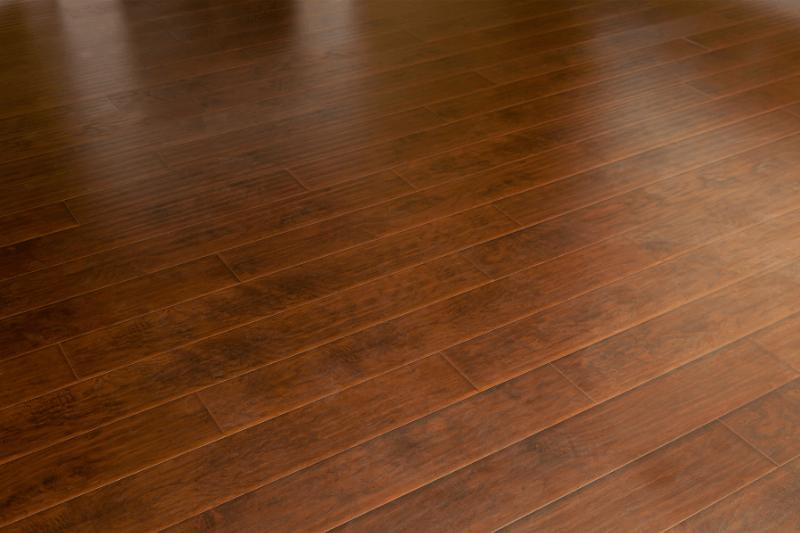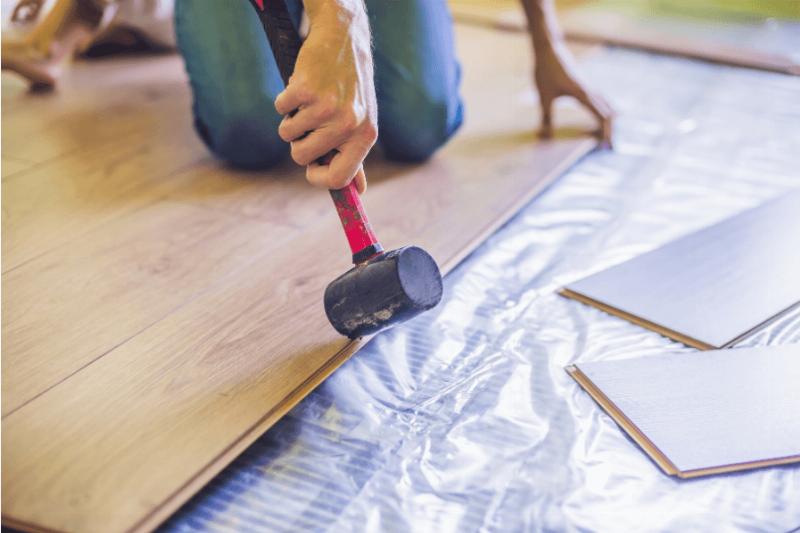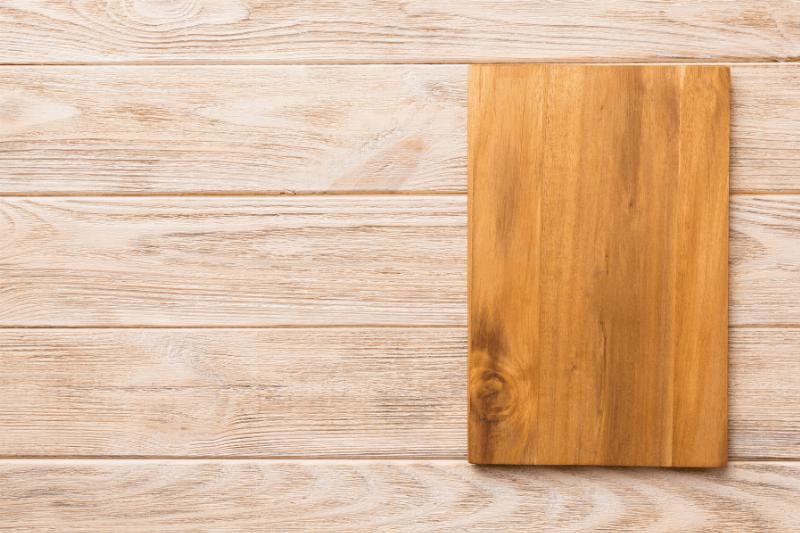Laminate is similar to a superhero for floors. It is strong, fashionable, and appears unstoppable. However, a common question arises: what would happen if there was a water leak? Will the floor stand with the weight, or will it give way?
We are here to answer the question of whether laminate flooring is waterproof. We will explore the science of laminate flooring and identify its advantages and disadvantages by keeping moisture in mind.
Let’s eliminate some myths before going into detail. Waterproof is not equal to water-resistant. A raincoat and a submarine are similar in keeping water out, but to different degrees. Therefore, even though laminate flooring might be able to withstand the occasional water leak, it is not immune to water damage. Keep reading to learn more!
Understanding Laminate Flooring
Laminate flooring is made of Multiple layers. These layers usually consist of a top, decorative, core, and backing layer. The top layer is a clear, protective layer that keeps stains, fading, and scratches off the floor.
The decorative layer provides the floor’s aesthetic appeal, which enhances the appearance of tile, stone, or hardwood. High-density fiberboard (HDF) or medium-density fiberboard (MDF) is typically used for the core layer, which gives structural stability, while the backing layer provides support and moisture resistance.
Types of Laminate Flooring

Three distinct categories exist within the world of laminate flooring.
- Traditional flooring
- Water Resistant Flooring
- Waterproof flooring
Let’s compare these types.
|
Laminate Flooring Type |
Water Resistance |
Suitability for Wet Areas |
Durability |
|
Traditional Laminate |
Not Water Resistant |
Not suitable for wet areas |
Less durability |
|
Water-Resistant Laminate |
Resistant to water damage |
Tolerates some moisture and spills, but long exposure may cause damage |
Moderate durability |
|
Waterproof Laminate |
More resistant to water damage |
Suitable for wet areas, but not entirely waterproof |
Enhanced durability |
Water-Resistant vs Waterproof Flooring
When choosing flooring materials, distinguishing between water-resistant and waterproof options is essential for ensuring long-term satisfaction and durability.
Water-resistant flooring is designed to repel water or moisture to a certain extent, offering protection against spills and splashes for a limited duration.
On the flip side, waterproof flooring offers complete impermeability to water, safeguarding against leaks and potential damage even in situations of extended flooding. This level of protection ensures that the flooring remains unaffected by moisture. So, it is an ideal choice for areas prone to water exposure, such as bathrooms, kitchens, and basements.
Debunking the Myth: Laminate Flooring is Waterproof
Laminate flooring has many advantages, but it’s important to dispel the misconception that it is inherently waterproof. Despite being somewhat water-resistant by design, modern laminate floors are not moisture-proof. When the core layer is left in water for an extended amount of time, it can swell and get damaged because it is usually composed of fiberboard.
Efficiency and Limitations
The waterproof laminate flooring type is more water-resistant than traditional and water-resistant. But it is also not waterproof. Manufacturer’s warranties usually include limitations and barriers regarding things like pet urine and damage from water that comes from underneath the flooring.
Even with these drawbacks, homeowners are looking for waterproof laminate flooring that is aesthetically pleasing and long-lasting in moist environments.
Factors Affecting Water Resistance
The following factors affect laminate flooring’s ability to withstand water:
- Quality of Installation: Tightly sealed edges and seams during installation can improve the floor’s water resistance.
- Thickness of Wear Layer: A thicker wear layer offers excellent moisture resistance.
- AC Rating: Laminate flooring’s durability is indicated by its AC (Abrasion Class) rating. Better water resistance is typically interrelated with higher AC ratings.
- Maintenance: You can help keep the floor’s beauty over time by cleaning up water spills and keeping it dry.
Tips for Protecting Laminate Flooring from Water Damage

Even though laminate flooring might not be waterproof, you can reduce the amount of water damage by doing the following:
- Area Rugs and Matting: Use rugs or matting in spill-prone areas like kitchens and bathrooms.
- Appropriate Cleaning: Avoid wet mopping; use a damp cloth or recommended laminate floor cleaner.
- Humidity Control: Maintain a stable indoor humidity level, ideally between 30% and 50%, to prevent the laminate from warping or swelling due to moisture in the air. Use dehumidifiers or air conditioners as necessary, especially during damp or humid seasons.
- Prompt Action: Quickly address spills and leaks to prevent water from seeping into seams.
- Proper Installation: Ensure that the laminate planks are properly installed with tight seams and no gaps. A professional installation can significantly reduce the risk of water seeping through the cracks and causing damage to the subfloor.
Things to Keep in Mind for Laminate Flooring
When considering laminate flooring for your home, several key factors should guide your decision to ensure longevity, aesthetics, and functionality align with your lifestyle and needs. Here are essential points to remember.
1. Spills Happen Management
Spills can still occur even though laminate flooring is somewhat water-resistant by design. Spills, whether from a drink or a pet’s water bowl, must be cleaned up as soon as possible to stop the damage from seeping into the floor.
2. Be Mindful of High-Humidity Areas
High-humidity areas, like basements and bathrooms, are more likely to cause laminate flooring problems. If moisture in the air is allowed to seep into the floor, it can cause warping, swelling, and fungus growth.
You can protect your laminate flooring and control humidity levels by using exhaust fans.
3. Pets and Water Bowls
Keep an eye on your pets’ water bowls if you have any. Even though laminate flooring can tolerate the odd spill from a water bowl, it can still become damaged over time from constant wetness.
Think about putting a mat or tray underneath to prevent spills and save the flooring around your pet’s water bowl.
4. Watch Out for Standing Water
The enemy of laminate flooring is standing water. A burst pipe, a plumbing leak, or a flood can all result in standing water that can quickly seep into the core of the floor and cause irreversible damage.
If there’s a big flood or leak, you should remove the water immediately and get professional advice to know how much damage has been done.
5. Regular Maintenance is Key
You need to maintain the integrity of your laminate flooring regularly. Its lifespan and best-looking appearance can be extended by routinely vacuuming or sweeping to remove dirt and waste.
Quickly cleaning spills and using mild cleaning solutions made especially for laminate floors can save the laminate floors.
6. Consider Alternative Flooring Options
If you want to install flooring in a room that experiences a lot of moisture, like a bathroom or laundry room, consider looking into options like ceramic tile or vinyl plank flooring. These materials work better in humid environments and highly resist water and moisture.
7. Consult with Flooring Professionals
If in doubt, seek advice from flooring specialists or the laminate flooring manufacturer. They can give analysis and suggestions based on your unique flooring requirements and type. They will help you save your investment and extend the life of your laminate flooring.
Need Help for Repair and Maintenance?
If you need help with repair and maintenance services for your home flooring, it’s advisable to contact a reliable remodeling company that offers smart solutions.
Smart Remodeling LLC stands out as a trustworthy and skilled option for people living in Houston. The company offers a broad range of home renovation and repair services with high-quality solutions tailored to your needs.
Smart Remodeling LLC focuses on quality and durability and ensures that all repair and maintenance work is performed to the highest standards. Their skilled professionals use top-quality materials and the latest techniques to deliver results that look great and stand the test of time.
Beyond the completion of your project, the company offers ongoing support and advice to help you maintain the condition of your home. They can provide tips and strategies for regular maintenance, allowing you to prevent future issues and extend the lifespan of your repairs.
Conclusion
In conclusion, it’s critical to eliminate the misconception that laminate flooring is waterproof, even though it offers style, affordability, and durability. Given that laminate flooring can only withstand water to a certain degree, it is essential to understand the difference between waterproof and water-resistant flooring.
Homeowners can minimize the risk of water-related damage and enjoy the benefits of laminate flooring by following the safety measures.






